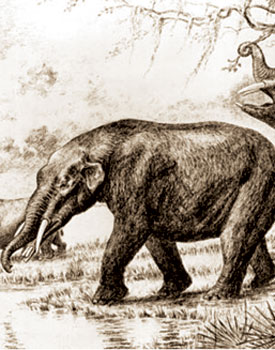
In prehistoric times, Florida closely resembled Jurassic Park. Hornless rhinos and mastodons, a relative of the elephant, roamed all over the Sunshine State, leaving a trail of fossils that have kept scientists fascinated ever since Henry Gifford’s son discovered a mastodon tooth in Vero in 1913.
When Henry T. Gifford applied in 1891 to establish a post office in his home in the obscure new town of Vero (the name Vero Beach would not be adopted until 1925), he could hardly have dreamed that, within a few years, Vero would be catapulted into fame and controversy in the scientific world, and that his own son would have a hand in the events. As the fledgling town grew, infrastructure was developed and a system of drainage canals was dug. It was then that Vero residents were confronted with their past–a past more ancient and spellbinding than anyone could possibly have imagined.
It began in 1913 when Henry’s son, Friend Charles Gifford, discovered a curious artifact in the soil disturbed by the canal dredging. The item was identified as the tooth of a mastodon, a prehistoric relative of the elephant. At this point, Dr. E.H. Sellards of the Florida Geological Survey, which had been established in 1907, made his first visit to Vero and several more prehistoric animal remains were uncovered. But the story did not really heat up until about two years later.
Read the entire article in the March 2007 issue







 True Tails is a series written by Amy Robinson for Vero Beach’s dog lovers. Ask Amy about your dog’s behavior by clicking below.
True Tails is a series written by Amy Robinson for Vero Beach’s dog lovers. Ask Amy about your dog’s behavior by clicking below.
Facebook Comments